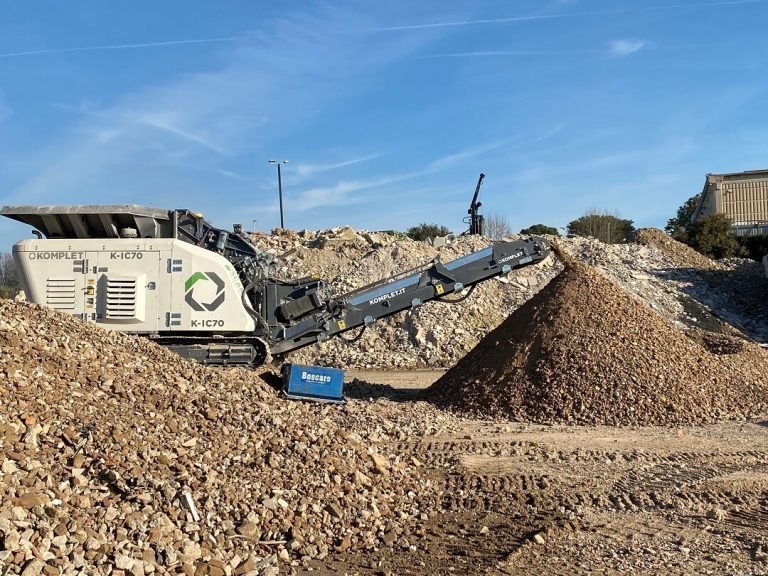
Waste-to-Wealth: How On-Site Waste Processing Can Generate Revenue for Construction Projects
In the construction industry, waste management is often viewed as a necessary expense—a cost of doing business. However, with the advent of on-site waste processing technologies, waste is no longer just an expense; it has the potential to become a valuable asset.
By transforming construction and demolition (C&D) waste into reusable materials, companies can create new revenue streams, reduce costs, and boost their profitability. In this blog post, we’ll explore the various ways in which on-site waste processing can turn waste into wealth for construction projects.
1. Recycling Materials into Usable Aggregates
One of the primary ways that on-site waste processing can generate value is by recycling concrete, bricks, and asphalt into usable aggregates. Instead of paying to transport and dispose of these materials at a landfill, construction companies can use crushers and screeners on-site to break down the waste into different sizes of aggregate.
These recycled aggregates can then be used as sub-base material for new construction projects, reducing the need to purchase virgin materials. In some cases, companies can even sell surplus aggregates to other contractors or businesses, turning what was once a cost into a source of revenue.
2. Repurposing Wood and Metal for Resale
Wood and metal are two common components of construction waste that can be processed on-site and repurposed for profit. Wood waste, for example, can be chipped or shredded and used for landscaping purposes or as biomass fuel. Reclaimed wood that is in good condition can also be sold for use in furniture making or home construction, often at a premium price due to its rustic appeal.
Similarly, metals like steel, aluminium, and copper can be separated and sold as scrap, generating additional income. Scrap metal recycling is not only a sustainable practice but can also bring in a considerable amount of revenue, depending on the market prices for these materials.
3. Producing Recycled Building Materials
On-site waste processing allows construction companies to create recycled building materials that can be used in future projects. Materials such as recycled concrete blocks, bricks, or even recycled gypsum can be produced from C&D waste and utilized in new construction, reducing the need to buy new materials.
This not only saves money but also positions the company as an eco-friendly business, which can attract clients interested in sustainable construction. In some cases, these recycled building materials can also be sold to other builders or developers, creating an additional revenue stream.
4. Generating Revenue Through Leasing Processing Equipment
Construction companies that invest in on-site waste processing equipment, such as crushers, screeners, and shredders, can also generate revenue by leasing out this equipment when it’s not in use. Other contractors or smaller companies may not have the resources to invest in their own processing machinery, making leasing a cost-effective option for them.
By renting out their equipment, companies can generate additional income, helping to offset the initial investment in machinery and maintenance costs.

5. Creating Valuable By-Products
Some types of C&D waste can be processed on-site to create by-products that are valuable to other industries. For instance, glass waste can be crushed to create glass aggregate, which can be used in landscaping or as a component in certain types of concrete. Similarly, plastic waste can be shredded and sold to recycling facilities to be used in manufacturing new plastic products.
By identifying the different types of waste produced during a construction project and processing them into marketable by-products, companies can unlock new opportunities for revenue.
6. Reducing Disposal Costs to Boost Profit Margins
While reducing disposal costs isn’t direct revenue generation, it does lead to significant savings that positively impact the bottom line. On-site waste processing significantly reduces the volume of waste that needs to be transported and disposed of in landfills. This translates into lower tipping fees, reduced transportation costs, and fewer labor hours spent handling waste.
These savings can then be reinvested into the project, allowing the company to allocate funds to other areas of development or to take on additional projects, ultimately increasing profitability.
7. Selling Carbon Credits
As environmental regulations become stricter, many construction companies are looking for ways to offset their carbon footprint.
By processing waste on-site, companies can significantly reduce their greenhouse gas emissions compared to traditional waste disposal methods. This reduction in emissions may make the company eligible for carbon credits, which can be sold on carbon trading markets to generate additional revenue.
The sale of carbon credits not only creates an additional income stream but also enhances the company’s reputation as an environmentally responsible business.
8. Enhancing Competitiveness with Sustainable Practices
In today’s market, clients are increasingly prioritizing sustainability in their construction projects. Companies that incorporate on-site waste processing and recycling into their practices can use this as a selling point to attract new clients.
By positioning themselves as leaders in sustainable construction, they can gain a competitive advantage, win more contracts, and ultimately increase their revenue.
This indirect revenue generation through enhanced competitiveness and brand value is another example of how on-site waste processing can transform waste into wealth.
Conclusion
On-site C&D waste processing is a game-changer for the construction industry. By turning waste into valuable products, construction companies can create new revenue streams, save on disposal and material costs, and even generate income through leasing equipment or selling carbon credits.
What was once considered a costly burden can now be leveraged to boost profitability, improve sustainability, and create a positive impact on the environment.
For construction companies looking to maximize their profits and embrace sustainable practices, on-site waste processing is a powerful tool that can turn waste into wealth, making every project more economically and environmentally beneficial.
